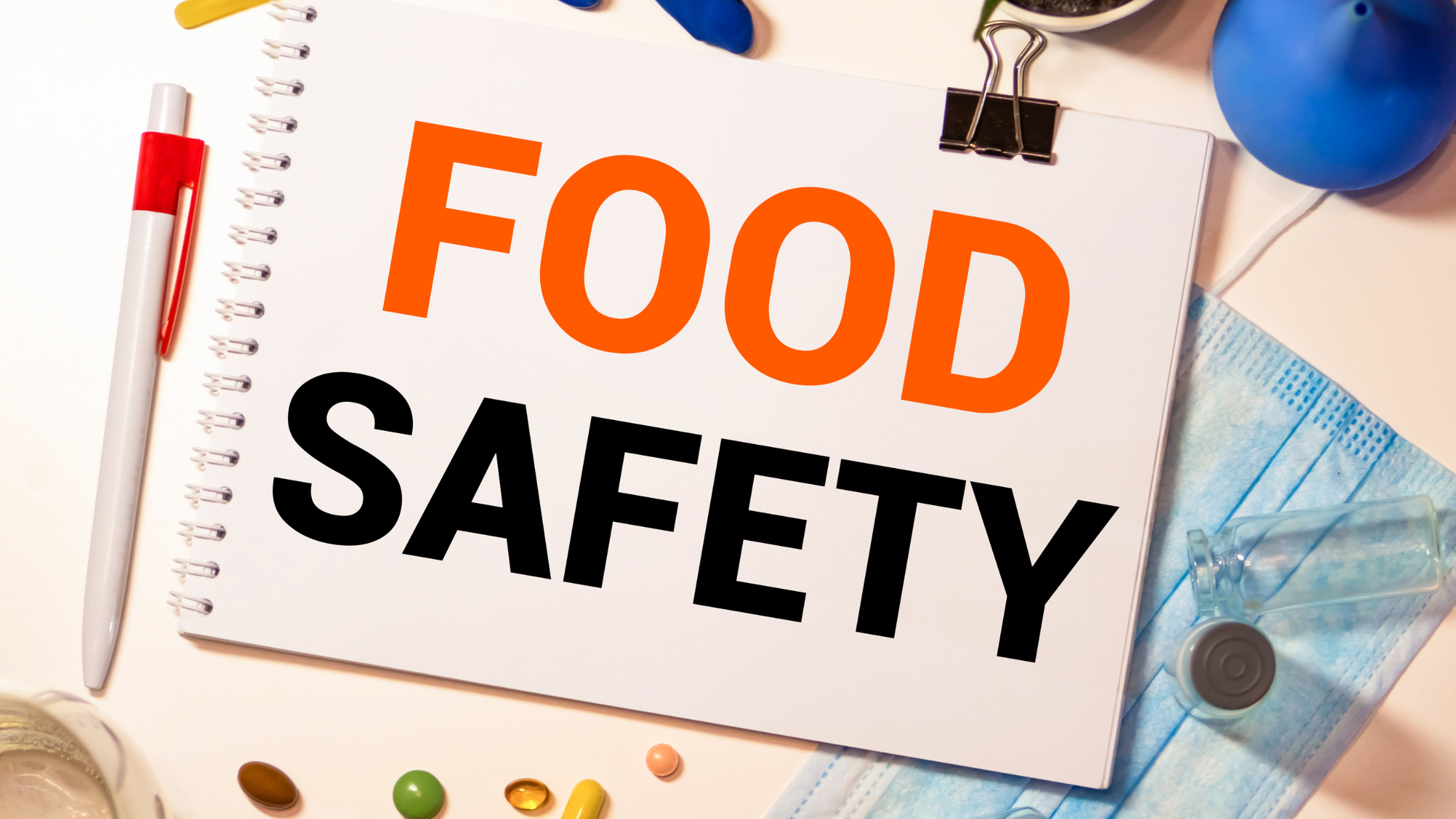
FDA to Eliminate Self-Affirmed GRAS: What This Means for Food Safety
Table of Contents
Introduction
Food safety has long been a topic of concern in the United States, with regulatory policies designed to protect consumers from harmful ingredients. However, one major loophole has persisted: the self-affirmed Generally Recognized as Safe (GRAS) pathway, which allows companies to introduce new food ingredients without notifying the Food and Drug Administration (FDA) or the public. This process, originally intended to streamline the introduction of well-established food substances, has been exploited by some manufacturers to bypass rigorous safety reviews.
To address this, Health and Human Services (HHS) Secretary Robert F. Kennedy Jr. has directed the FDA to explore rulemaking that would eliminate this self-affirmed pathway. By removing the ability for companies to unilaterally declare substances as safe, the government aims to increase transparency, consumer trust, and public health protections. The move is part of a broader effort to enhance food safety regulations and ensure that all food ingredients are subject to proper scientific evaluation before entering the food supply.
In this blog, we’ll explore the history of the GRAS rule, the controversy surrounding self-affirmed GRAS, and what this shift in policy means for consumers, food manufacturers, and the regulatory landscape.
What Is the GRAS Rule?
Origins of GRAS
The GRAS rule was established in 1958 as part of the Food Additives Amendment to the Federal Food, Drug, and Cosmetic Act. It was originally intended to exempt common food ingredients, such as salt, sugar, and vinegar, from requiring FDA approval because of their long history of safe use. However, as the food industry evolved, manufacturers began introducing new chemicals and additives under the same designation, often without the same historical evidence of safety.
Under the GRAS system, ingredients can fall into two categories:
- FDA-reviewed GRAS: Companies submit a GRAS notice to the FDA, which evaluates the safety data and publishes its findings publicly.
- Self-affirmed GRAS: Companies conduct their own safety evaluations without submitting documentation to the FDA, effectively introducing new substances into the food supply without regulatory oversight.
The Growth of Self-Affirmed GRAS
The self-affirmation process became widely used in the 1990s as an alternative to FDA review. The argument for this system was that companies should be able to determine the safety of their own products based on scientific research and expert review. However, this practice quickly raised concerns about conflicts of interest, lack of independent verification, and the potential introduction of unsafe ingredients.
While the FDA encourages companies to submit GRAS notifications, there is no legal requirement to do so. As a result, companies can introduce new food additives without public scrutiny, leading to criticism from consumer advocacy groups and food safety experts.
The Issues with Self-Affirmed GRAS
Lack of Transparency in Ingredient Approvals
One of the biggest concerns surrounding the self-affirmed GRAS system is the lack of transparency and accountability. When companies conduct internal safety reviews without FDA notification, the public remains unaware of what ingredients are being introduced into the food supply. Unlike FDA-reviewed GRAS substances, which are listed in public databases, self-affirmed GRAS substances often remain undisclosed, leaving both consumers and health professionals in the dark about potential risks.
Critics argue that this lack of oversight has allowed new chemical additives, preservatives, and synthetic compounds to enter the food supply without independent evaluation. In some cases, studies have revealed that certain self-affirmed GRAS substances may pose long-term health risks, but because they were never formally submitted for FDA review, their effects remained largely unknown until consumer complaints or independent research surfaced.
Potential Conflicts of Interest
Another issue with self-affirmed GRAS is the conflict of interest inherent in a system where companies evaluate their own ingredients. Unlike FDA-reviewed GRAS ingredients, where independent toxicologists and regulatory scientists assess safety data, self-affirmed GRAS relies on company-hired experts who may be financially incentivized to approve the ingredient regardless of potential risks.
Several investigations have found that food manufacturers often select industry-friendly scientists to conduct safety assessments, leading to biased conclusions that favor approval rather than rigorous safety evaluation. This raises serious concerns about corporate influence over food safety regulations and the potential for unverified substances to enter the food market without proper scrutiny.
Health Risks of Unregulated Ingredients
The absence of mandatory FDA review means that some self-affirmed GRAS substances may carry undisclosed health risks. Over the years, independent studies have identified potential dangers associated with certain food additives that were introduced under the self-affirmed GRAS system. Some of these risks include:
- Endocrine Disruption: Certain artificial preservatives and emulsifiers have been found to interfere with hormone balance and metabolism.
- Gastrointestinal Issues: Some synthetic emulsifiers used in processed foods have been linked to gut microbiome imbalances, contributing to inflammatory bowel conditions.
- Carcinogenic Potential: Some food additives that were self-affirmed as GRAS have later been reclassified due to links with cancer risks based on new scientific research.
Because companies are not required to submit safety data to the FDA, the burden of proving ingredient safety falls on consumers and independent researchers. This means that by the time an ingredient is flagged as harmful, it may have already been used in products for years, potentially affecting millions of consumers.
HHS and FDA Move to Close the Loophole
What the New Rule Would Change
In response to growing concerns over unregulated food additives, Health and Human Services (HHS) Secretary Robert F. Kennedy Jr. has directed the FDA to explore rulemaking to eliminate self-affirmed GRAS. This would mark a major shift in food safety regulation, requiring all companies to submit safety data for review before introducing new ingredients into the food supply.
The proposed change would close the loophole that allows companies to bypass FDA oversight and would ensure that every new ingredient undergoes proper scientific evaluation before approval. The key components of the proposed rule change include:
- Mandatory FDA Notification: Companies would be required to submit a GRAS notice for any new food ingredient, ensuring public and regulatory scrutiny.
- Independent Safety Evaluation: The FDA would review scientific safety data before granting GRAS status, preventing biased corporate evaluations.
- Public Transparency: All GRAS determinations would be publicly available, allowing consumers and health professionals to access ingredient safety data.
FDA’s Commitment to Stronger Oversight
The FDA has signaled its commitment to strengthening food safety by supporting greater transparency in ingredient approvals. Acting FDA Commissioner Sara Brenner, M.D., M.P.H., has stated that eliminating self-affirmed GRAS would allow the FDA to better protect public health by ensuring proper ingredient review.
According to the FDA, the agency currently reviews approximately 75 GRAS notices per year, with more than 1,000 GRAS determinations already published in their public inventory. However, under the current system, many ingredients remain undisclosed, making it difficult to track potential health risks.
By requiring mandatory notifications, the FDA aims to reduce consumer exposure to unregulated and potentially unsafe food additives. This move has been applauded by consumer protection groups who have long called for stricter regulations to prevent undisclosed substances from entering the food supply.
Legislative Action and Future Food Safety Laws
Beyond regulatory rulemaking, HHS is also working with Congress to explore legislative options to permanently close the self-affirmed GRAS loophole. New laws could establish more stringent safety requirements, ensuring that all food ingredients meet FDA safety standards before market approval.
Potential legislative changes under discussion include:
- Stronger Penalties for Non-Compliance: Companies that fail to submit ingredient safety data could face fines, product recalls, or legal action.
- Reassessment of Existing Self-Affirmed GRAS Ingredients: Ingredients that were introduced under the self-affirmation process may be re-evaluated for safety.
- More Funding for FDA Oversight: Increased resources for FDA scientists and regulatory teams to handle higher volumes of GRAS evaluations.
If passed, these legislative actions could significantly reshape the way food additives are approved in the U.S., bringing regulations closer to international standards and strengthening consumer protections.
Reactions from the Food Industry and Consumer Groups
Food Manufacturers and Industry Pushback
As expected, the proposed elimination of the self-affirmed GRAS pathway has triggered strong reactions from food manufacturers, ingredient suppliers, and industry trade groups. Many food companies oppose the change, arguing that the self-affirmation process has been a vital tool for innovation in the food industry.
According to the Grocery Manufacturers Association (GMA) and the Food and Beverage Trade Alliance, eliminating self-affirmed GRAS could create "unnecessary regulatory burdens" that slow down innovation and increase costs for businesses. They argue that companies already conduct rigorous internal safety evaluations before introducing new ingredients and that requiring FDA review for every substance would delay market entry for potentially beneficial food products.
Consumer Advocacy Groups Support the Change
On the other hand, consumer safety and public health organizations have strongly endorsed the proposed rule change. Groups like the Center for Science in the Public Interest (CSPI) and the Environmental Working Group (EWG) have been campaigning for stricter oversight of food additives for years.
Advocates argue that allowing companies to self-certify ingredient safety without external oversight creates loopholes that put consumers at risk. They cite examples of previously self-affirmed GRAS ingredients that were later found to pose health risks, including certain artificial emulsifiers, preservatives, and synthetic flavor enhancers.
Scientific and Medical Community Responses
Health professionals and researchers in toxicology, food science, and nutrition have generally welcomed the proposed regulation. Many experts believe that the self-affirmation process has historically lacked scientific rigor, allowing some poorly studied substances to enter the food supply without long-term safety data.
Dr. Lisa Archer, a food toxicology researcher, stated that mandatory FDA review is necessary to prevent questionable ingredients from entering the market. She notes that, in the past, several self-affirmed GRAS substances were later linked to potential health risks, requiring FDA intervention years after they had already been used in food products.
How Other Countries Regulate Food Additives
European Union: Strict Ingredient Approval
The European Food Safety Authority (EFSA) has long been recognized for its strict regulatory approach to food safety. In the EU, all new food additives must undergo comprehensive risk assessment before market approval. Unlike the U.S., self-affirmed approvals do not exist in the EU regulatory framework.
EU regulations require that manufacturers submit toxicological data, human exposure assessments, and risk analyses before an ingredient is legally approved for use in food products. Once approved, the ingredient is continuously monitored, and new safety data can trigger re-evaluation or even removal from the market.
Canada: A Balance Between Regulation and Industry
Canada's Health Canada agency follows a model that is stricter than the U.S. but more flexible than the EU. Food manufacturers must submit ingredient safety data for review, but the process is often faster and more industry-friendly than EFSA's model.
While Canada does allow some flexibility in ingredient approval, it still requires government oversight to ensure that new substances meet health and safety standards before they are added to food products.
United States: Catching Up to Global Standards
The U.S. has historically lagged behind in food ingredient regulation compared to Europe and Canada. The self-affirmed GRAS loophole allowed companies to introduce new additives with little to no regulatory review, which many experts say contributed to higher levels of artificial and ultra-processed ingredients in the American diet.
If the FDA follows through with eliminating the self-affirmation process, the U.S. could align more closely with international food safety regulations, ensuring that all food additives are properly reviewed before entering the market.
Potential Economic Impact of the New Regulations
Effects on Small and Large Food Manufacturers
The proposed rule change could have a major financial impact on both small and large food companies. While large manufacturers may have the resources to comply with stricter FDA oversight, smaller food companies could struggle to navigate the costs and complexities of mandatory ingredient safety reviews.
Industry experts estimate that requiring FDA approval for every GRAS substance could lead to:
- Longer time-to-market: Companies may face months or even years of regulatory review, delaying new product releases.
- Higher compliance costs: The need for toxicological studies, clinical research, and regulatory submissions could increase operating expenses.
- Market consolidation: Large food corporations with bigger budgets may dominate the industry, while smaller brands struggle to afford compliance requirements.
Consumer Benefits: Safer and More Transparent Food Products
Despite concerns over increased regulatory costs, many experts argue that the long-term consumer benefits outweigh the short-term industry challenges. By eliminating self-affirmed GRAS, the FDA would ensure that new ingredients meet stricter safety standards, leading to cleaner, more transparent food products.
Key consumer benefits include:
- Better food safety: Consumers would be less exposed to potentially harmful ingredients that previously entered the food supply without proper oversight.
- Greater ingredient transparency: Every GRAS-approved ingredient would be listed in public FDA databases, allowing consumers to research food additives before making purchases.
- Stronger trust in food labels: With FDA oversight, consumers could feel more confident in product safety claims.
What Consumers Can Do to Make Safer Food Choices
Reading Labels More Carefully
With increasing concerns about food additives, consumers must become more proactive about the ingredients in their diet. While food labels list ingredients, they often do not disclose whether those ingredients were self-affirmed as GRAS or formally reviewed by the FDA.
Consumers can take the following steps to make informed choices:
- Check for FDA-reviewed ingredients: Use the FDA's GRAS database to see if a food ingredient has undergone regulatory review.
- Avoid products with vague terms: Ingredients like "flavoring agents" or "proprietary blends" often mask unregulated substances.
- Prioritize whole foods: Choosing minimally processed foods naturally reduces exposure to questionable food additives.
Demanding Greater Transparency from Food Companies
Consumers play a vital role in shaping the food industry. By pressuring manufacturers to disclose ingredient safety data, individuals can push for greater transparency and accountability.
Ways to encourage transparency include:
- Contacting brands to ask if their ingredients were FDA-reviewed.
- Supporting companies that voluntarily submit GRAS notices instead of relying on self-affirmation.
- Engaging in public comment periods when the FDA seeks consumer input on proposed regulations.
Advocating for Stronger Food Safety Policies
Public engagement can help accelerate the FDA’s push for stricter ingredient regulations. Organizations like the Environmental Working Group (EWG) and the Center for Science in the Public Interest (CSPI) regularly campaign for safer food policies.
Consumers can take action by:
- Signing petitions for stronger FDA oversight of food additives.
- Contacting elected officials to support legislation aimed at closing regulatory loopholes.
- Following food safety research and sharing findings with their communities.
How Food Companies Can Adapt to the New Regulations
Investing in Rigorous Safety Testing
For companies that have relied on self-affirmed GRAS, the transition to mandatory FDA notification means investing in comprehensive toxicology studies and clinical research. While this may be a challenge for smaller brands, it ultimately leads to greater consumer trust and regulatory compliance.
To stay ahead, food companies should:
- Work with independent scientific panels to evaluate ingredient safety.
- Ensure that all safety data is well-documented and ready for FDA submission.
- Develop GRAS notices proactively instead of waiting for regulatory enforcement.
Prioritizing Transparent Labeling
With consumer demand for clean labels at an all-time high, brands should take this opportunity to revise packaging and marketing materials to reflect full transparency.
Strategies include:
- Clearly labeling FDA-reviewed GRAS ingredients.
- Providing online ingredient traceability for consumers.
- Avoiding misleading claims that could lead to regulatory scrutiny.
Preparing for Potential Supply Chain Disruptions
The FDA’s increased oversight of new ingredients could affect supply chains, as some previously self-affirmed ingredients may no longer qualify for market use. Companies that rely on imported additives may also face additional compliance barriers.
To minimize disruption, food manufacturers should:
- Identify alternative FDA-approved ingredients in case of regulatory rejections.
- Strengthen supplier relationships to ensure ingredient safety compliance.
- Keep a close watch on FDA regulatory updates and adjust sourcing strategies accordingly.
The Future of Food Regulation in the U.S.
A Step Toward Safer Food Standards
Eliminating the self-affirmed GRAS loophole marks a significant shift in U.S. food policy. By requiring all food ingredients to undergo proper FDA review, the agency is taking a stronger stance on food safety and working to restore public trust in the food supply.
Although industry resistance is expected, the long-term benefits of increased transparency and consumer protection outweigh the challenges. This change could align the U.S. more closely with global food safety standards, similar to the European Union and Canada.
What This Means for Consumers
For everyday consumers, this regulatory shift means a cleaner, safer, and more transparent food supply. As the FDA moves forward with rulemaking, consumers should remain vigilant, support brands that prioritize safety, and push for continued improvements in food regulations.
Next Steps for the FDA
As the FDA explores the elimination of self-affirmed GRAS, stakeholders across the industry should expect:
- Public comment periods for proposed rulemaking.
- Increased enforcement actions against companies that fail to disclose ingredient safety data.
- A gradual transition period to allow businesses time to comply with new requirements.
Ultimately, the move to tighten food ingredient safety regulations signals a new era of accountability in the U.S. food industry—one that prioritizes consumer well-being over corporate convenience.









